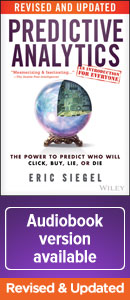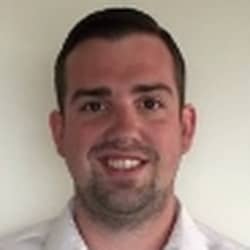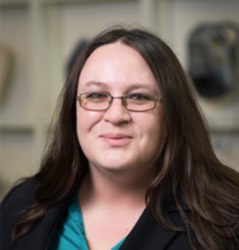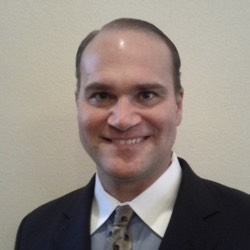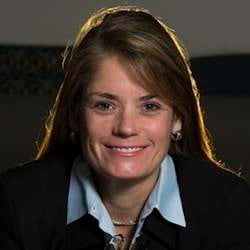Conference Day 1: Tuesday, June 20, 2017 |
Registration & Networking Breakfast
Conference Welcome Remarks
Keynote
How Predictive Modelers Can Benefit from Big Data without Big Headaches
Predictive modelers love more data, and often our mindset is "the more data the better the models". We crave more records. We love building more features. And with recent advances in cloud computing, it is easier than ever to build, store, and access big data. However, we often find that big data means big headaches for data preparation and models. Worse yet, big data doesn't necessarily result in more accurate models.
In this keynote, Mr. Abbott will describe ways predictive modelers should approach building predictive models on big data, tame problems with clever design, and leverage resources to scale big data solutions.
Exhibits & Morning Coffee Break
[ Top of this page ] [ Agenda overview ]
10:30-11:15am • Room: Salon A3
 Track 1: Seasonality and Other Contextual Factors
Track 1: Seasonality and Other Contextual FactorsCase Study:Paychex
Retention Modeling in Uncertain Economic Times
Small businesses are susceptible to even minor changes in economic conditions. When strategically allocating retention efforts across half a million businesses, we need to account for said changes as well as maximize our resource allocations. Traditional modeling techniques can fail over time in the presence of concept drift. We devised an innovative method to account for unknown changes by using seasonal model and trend model to probabilistically assign retention efforts. Additionally we built in functionally that allows new variables to be considered for development as they become relevant. This new methodology removes the necessity for annual retools and stabilizes performance.
10:30-11:15am • Room: Salon A5
 Track 2: Retail Analytics
Track 2: Retail AnalyticsCase Study: SmarterHQ
Automated Retail Analytics - Omni-Channel and at Scale
In this session, I will discuss automation strategies currently behind SmarterHQ's store front product. Here we combine entity analytics, predictive analytics and data processing into a scalable and flexible platform. This enables actionable customer intelligence delivery in near real time for onsite experience and market campaign generation updated every 20 minutes. This technology built on top of AWS redshift and python. This technology combines digital and analog retail channels into an omni-channel experience. I will discuss the significant aspects of this technology and its flexibility and scalability to new technology and customers.
[ Top of this page ] [ Agenda overview ]
11:20am-12:05pm • Room: Salon A3
 Track 1: Thought Leadership
Track 1: Thought LeadershipWhat is the Analytic Maturity of Your Company and Five Ways to Improve It
The Analytic Maturity Model quantifies how capable your organization is of identifying analytic opportunities, developing analytic models, deploying analytic models, and improving deployed models. In this talk, we explain how you can measure the analytic maturity of your organization and five steps you can take to improve it. We discuss how best to introduce these ideas into your team, department or organization. We also share the results of a survey of over 20 companies that assessed their analytic maturity and some of the lessons learned.
11:20am-12:05pm • Room: Salon A5
 Track 2: Cross-Enterprise Deployment; Banking
Track 2: Cross-Enterprise Deployment; BankingVisualization of Analytics Results - Critical for Communication
Analytics results can be lost without the proper visualization or ineffective communication. A firm understanding of data story, who the intended audience is and how people perceive information is critical to the success of your work. In this session, we will examine how to take the results from data mining and analytics to create powerful and convincing visualizations. We will focus on how infographics, PowerPoint presentations and dashboards are deployed to create powerful charts, dashboards and infographics. We will explore how to use best practices to tailor your visualizations to connect with different audience types and create a lasting impact on them using case study data.
[ Top of this page ] [ Agenda overview ]
Lunch in Exhibit Hall
1:30-2:15pm • Room: Salon A5
Keynote
The Centrality of a Detailed Understanding of your Audience
For media organizations an understanding of one's audience is key to delivering optimal content. The path to this understanding often runs through logged behavioral data, but can we leverage methods from the world of polling to generate additional insights?
[ Top of this page ] [ Agenda overview ]
Gold Sponsor Presentation
Driving high-impact business outcomes with the Art of Analytics
Great insights are more than science; they are an Art form. Successful companies must foster a culture of creativity and develop innovative ways to showcase the value of insights garnered from big data analyses. The point of advanced analytics is not just the implementation of powerful algorithms at scale but also to showcase how critical insights are effectively visualized and understood within the business. This results in operationalizing analytic insights and that ensures the realization of high-impact business outcomes. Join us for a session in which we show you a few innovative data visualizations and the unique stories that underlie each and how you too can deliver successfully upon your business objectives with the right ways to communicate the impact of advanced analytics insights within your organization.
2:40-3:00pm • Room: Salon A3
 Track 1: Government applications
Track 1: Government applicationsCase Study: City of Chicago
Using Data Science to Predict Water Quality in Lake Michigan's Swimming Beaches
Chicago has three-dozen beaches that, sometimes, have high E. Coli levels. When do we need to warn the 9 million annual visitors of potentially high E. Coli levels? In 2016, members of Chi Hack Night built an improved statistical model to predict the E. coli levels at Chicago's beaches.
Built entirely by a team of volunteers from Chicago's civic tech community, this predictive model was officially adopted by the City of Chicago in May 2016 to help the Park District know when they should issue warnings to swimmers of potentially high levels of bacteria.
In this session, City of Chicago Dept. of Innovation & Technology Data Scientist Nick Lucius will cover this project's analytical and deployment process.
2:40-3:25pm • Room: Salon A5
 Track 2: Churn Modeling (for Marketing & HR)
Track 2: Churn Modeling (for Marketing & HR)Using Survival Analytics for Predicting Churn
Many problems depend on event timing - customer or employee turnover are prime examples. But many practitioners still use logistic methods, which are inflexible and less accurate. Survival methods, born in medical statistics, often predict better, because they resolve the complex relationship between turnover and tenure. As a bonus, survival figures can be used for risk weighting and lifetime value calculations.
Cast aside your fixed-period assumptions, and come learn how to model, validate, and deploy survival methods for your hardest turnover problems.
3:05pm-3:25pm • Room: Salon A3
 Track 1: Next Best Offer; Banking
Track 1: Next Best Offer; BankingCase Study: Banco Hipotecario (Bank in Argentina)
Building Your Own Real-Time Decision System - Lessons Learned
Everyone wants to provide the next best offer for his or her customers. It seems easy: You build the model and get the results. But, as Murphy's law states "If there are two or more ways to do something, and one of those ways can result in a catastrophe, then someone will do it." These are the lessons we learned from our experience.
[ Top of this page ] [ Agenda overview ]
Exhibits & Afternoon Break
3:55-4:15pm • Room: Salon A3
 Track 1: Agile Analytics
Track 1: Agile AnalyticsCase Study: Allstate Insurance
Our Success with Agile Analytics
We have developed a process model for agile analytics to churn out predictive models in a 30 day time frame from inception to model delivery. Analytics teams normally struggle with analysis paralysis, continuing to polish models without a deliverable product for several months. This session will describe our method to overcome this bottleneck.
4:20-4:40pm • Room: Salon A3
 Track 1: Predictive Investing (VC)
Track 1: Predictive Investing (VC) Case Study: OpenView Venture Partners
Predicting the Future Success of B2B Software Companies
Venture capital industry has evolved into a more data driven industry, as more data are available around startups, entrepreneurs and markets. One of the modern efforts of leading edge VCs are to utilize data to gain better insights into their prospects and potential investments. We have collected various public data around private companies and have evaluated various algorithms to prioritize the companies we reach out to. We investigate the shortcomings of utilizing public data and will look at how different parameters affect the growth of companies and possibly provide predictions on future success or not.
3:55-4:40pm • Room: Salon A5
 Track 2: Lifetime Value; B2B
Track 2: Lifetime Value; B2BCase Study: Microsoft
Using Predicting Customer Lifetime Value for a Subscription Based Business
This session showcases a new predictive model for customer lifetime value (LTV) in a cloud computing business. It is also the first known application of the Fader RFM approach to a cloud business. This Bayesian approach predicts a customer's LTV with Symmetric Absolute Percentage Error (SAPE) of only 3% on an out-of-time testing dataset. It will be used to enhance several business decisions.
[ Top of this page ] [ Agenda overview ]
4:45-5:30pm • Room: Salon A3
 Track 1: Non-Profit Applications
Track 1: Non-Profit ApplicationsData Science for Social Good: How Predictive Analytics Can Help Governments and Non-Profits
In this session, we'll cover outcomes and lessons learned from the 4 years of the Data Science for Social Good Fellowship and the year round program at the Center for Data Science and Public Policy at University of Chicago. We have partnered with a number of Government agencies and non-profits to do predictive analytics projects in topics including education, environment, public safety, criminal justice, health, economic development and transparency.
 Lauren Haynes
Lauren HaynesSenior Project Manager
Center for Data Science and Public Policy at The University of Chicago
4:45-5:30pm • Room: Salon A5
 Track 2: Crediting Scoring; Advanced Methods
Track 2: Crediting Scoring; Advanced MethodsAn R Based Variable Transformation and Selection Tool for Credit Scorecards
This talk will present a new open source interactive variable selection tool for credit scorecards. This tool leverages statistical learning methods within a traditional WOE/Information Value. Using variable clustering on the transformed WOE variables allows for a supervised clustering methodology that reduces collinearity, allows for comparison among mixed variable types of nominal and continuous, and uses a supervised learning method rather than typical unsupervised variable cluster methods. This will be demonstrated on an installment loan portfolio dataset.
Networking Reception
[ Top of this page ] [ Agenda overview ]
Conference Day 2: Wednesday, June 21, 2017 |
Registration & Networking Breakfast
Keynote
Special Plenary Session
What to Optimize? The Heart of Every Analytics Problem
Every analytics challenge reduces, at its technical core, to optimizing a metric. Product recommendation engines push items to maximize a customer's purchases; fraud detection algorithms flag transactions to minimize losses; and so forth. As modeling and classification (optimization) algorithms improve over time, one could imagine obtaining a solution merely by defining the guiding metric. But are our tools that good? More importantly, are we aiming them in the right direction? I think, too often, the answer is no. I'll argue for clear thinking about what exactly it is we ask our computer assistant to do for us, and recount some illustrative war stories. (Analytic heresy guaranteed.)
[ Top of this page ] [ Agenda overview ]
10:00-10:45am • Room: Salon A3
 Track 1: Leadership/Management
Track 1: Leadership/Management
Case Studies: GAP, SAP, Lenovo, IBM
Change Management for Establishing a Data-Driven Culture
Best-in-class organizations are tapping into the power of analytics to improve performance and identify new opportunities ahead of the competition. Though most organizations understand the value of analytics, the leaders have to figure out how to embed analytics thinking into the organization and making it a part of how decisions are made.
This presentation combines a series of case studies, survey data, and best practices in change management to create guidance on how to establish a data-driven culture including generating buy-in, training, communication, measuring success, and engagement tactics.
10:00-10:45am • Room: Salon A5
 Track 2: Modeling Methods
Track 2: Modeling Methods
Integrating Segmentation with Predictive Models-Building More Robust Solutions
Many practitioners and business domain experts struggle with how to use both predictive models and segmentation to build optimal business solutions. These integrated solutions adopt two very different approaches depending on the business problem being more strategic vs. tactical in nature. Defining what is considered strategic vs. tactical is the first step in determining the right approach towards integration. Both approaches will detail the different techniques in both "working" the data as well as the different mathematical techniques that are employed. At the same time, the key incremental benefits from a more integrated solution will be outlined under each approach.
[ Top of this page ] [ Agenda overview ]
Exhibits & Morning Coffee Break
11:15-11:35am • Room: Salon A3
 Track 1: Management Analytics
Track 1: Management Analytics
Case Study: Nokia
Measuring the Impact of Culture Change Using Advanced Analytics
It is often critical for an organization to transform its culture to rise to new challenges in the marketplace. However, when a company spans the globe, and encompasses numerous lines of business, how do you track the progress of the necessary changes? Nokia developed a solution using statistical analysis, predictive analytics, and business intelligence to create a reporting system that provided leaders, stakeholders and employees with insights they could act upon. In this session, we'll discuss some of the opportunities, and challenges, of employing a data-driven approach to change management.
11:40am-12:00pm • Room: Salon A3
 Track 1: Healthcare Analytics
Track 1: Healthcare Analytics
Early Screening for Autism By Combining Question-Based and Video-Based Predictors
Early screening of cognitive health development disorders among children is a novel and challenging application domain to predictive modeling machine learning techniques.
We present the challenges, solutions, insights, and results of our user-facing solution that screens for autism by combining multiple predictors each trained on independent signals, while allowing for inconclusive determination on hard-to-screen subjects.
11:15am-12:00pm • Room: Salon A5
 Track 2: Uplift Modeling
Track 2: Uplift Modeling
Case Study: Telenor; US Bank
Uplift Modeling: Optimize for Influence and Persuade by the Numbers
Data driven decisions are meant to maximize impact - right? Well, the only way to optimize influence is to predict it. The analytical method to do this is called uplift modeling (aka, persuasion modeling). This is a completely different animal from standard predictive models, which predict customer behavior. Instead, uplift models predict the influence on an individual's behavior gained by choosing one treatment over another. In this encore session, PAW founder Eric Siegel provides an introduction to the growing field of uplift modeling.
[ Top of this page ] [ Agenda overview ]
Lunch in Exhibit Hall
Keynote
Case Study: American Savings Bank
Driving Growth And Profitability Through Scoring Modeling, Programming, and Price Optimization
In 2016, the banking industry in Hawaii has seen a revitalizing growth of $104 million in consumer loans. American Savings Bank (ASB), third player in the market, surpassed all its competitors capturing 36% of this growth through a renovated strategy of origination and account management, strongly driven and supported by data and analytics.
This session describes how ASB increased the volume and profitability of its consumer loan portfolio, and reached unseen response rates in campaigns through scoring modeling, advanced programming, and price optimization; evidence of a clear vision to become a true data driven organization.
[ Top of this page ] [ Agenda overview ]
Expert Panel
Women in Predictive Analytics: Opportunities and Challenges
Across fields of science and engineering, the track record of contributions made by women continues to grow - a fact that helps pave the way for future female scientists. Predictive analytics and data science are no exception. In this session, our expert panelists will address questions such as:
- How to increase the count of women in your analytics team
- Differences from other science and engineering fields in terms of being male dominated
- How to "survive" as a woman in analytics
- The next generation - encouraging girls and newcomers in STEM (science, technology, engineering, and mathematics)
See also this Predictive Analytics Times article for related reading on the topic.
Moderator:
 Lauren Haynes
Lauren HaynesSenior Project Manager
Center for Data Science and Public Policy at The University of Chicago
Exhibits & Afternoon Break
 Track 1: Cyber Security
Track 1: Cyber Security
Case Study: Health Care Service Corporation
Challenges of Information and Cyber Security Using Predictive Analytics
Historically information and cyber security have used rule-based systems to detect security threats. This method has been applied to various threat vectors successfully. Despite requiring constant updates and additions to rules, this method is still widely used. However, as governments, organized crime, and hacker groups have become more sophisticated with cyber attacking, the rule-based systems are not sufficient for detecting threats. Security practitioners have begun using predictive analysis and other algorithms to increase system threat detection. What are the challenges for predictive analytics in information and cyber security? Are the rule based and predictive analytics enough?
3:30-4:15pm • Room: Salon A5
Track 2: Advanced Methods
Case Study: Louisiana State University & Louisiana Dept of Corrections
How to Revolutionize Your Model Optimization
We describe how you can combine cutting-edge predictive science with the art of data measurement, at the individual and aggregate levels. Specifically, we demonstrate the value of adding structural characteristics to your models. Why? Because these enhanced techniques have dramatically reduced the homicide rate in Baton Rouge, increased college student retention in a major university to record levels, and optimized student recruitment in that university. Because of these successes, we have also been tasked with assessing the criminal risk and needs of more than 110,000 offenders who are in Louisiana state custody.
[ Top of this page ] [ Agenda overview ]
 Track 1: Deployment Considerations
Track 1: Deployment Considerations
Case Study: National Consumer Panel
Combining Inferential Statistics with Predictive Modeling to Evaluate Changes in Your Business
After enjoying success from implementing a predictive analytic framework, organizations must commit to a process that is capable of considering the potential impact of change. At National Consumer Panel, (NCP), the combined use of inferential statistics with a predictive model process amenable to changing business conditions has been critical to achieving its goal of continuous improvement with respect to key performance indicators (KPIs) including churn.
Lessons learned include:
- How to translate and leverage knowledge from subject matter experts into the predictive analytic process
- How to adapt existing processes to foreseen and unforeseen changes in your business
4:15-5:00pm • Room: Salon A5
 Track 2: Best Practices
Track 2: Best Practices
Q&A: Ask Dean and Robert Anything (about Best Practices)
Preeminent consultant, author and instructor Dean Abbott, along with Open Data Group's partner Robert Grossman, field questions from an audience of predictive analytics practitioners about their work, best practices, and other tips and pointers.
[ Top of this page ] [ Agenda overview ]
